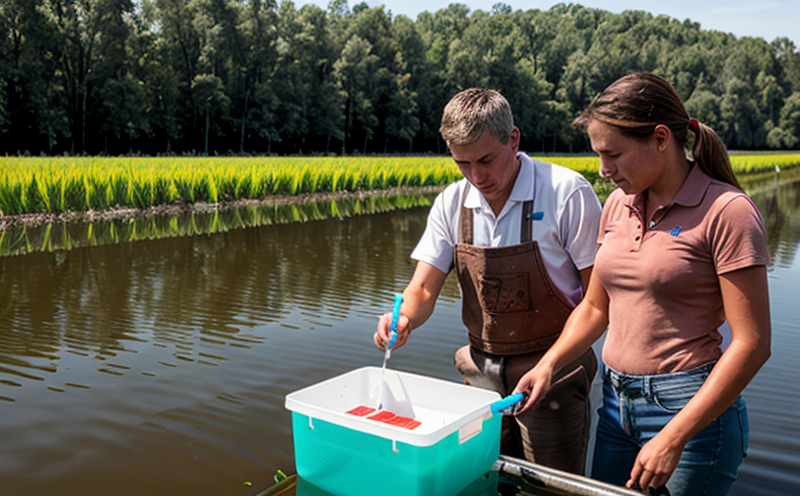Sodium Content Testing in Agricultural Water
Water quality is a critical factor in agriculture, especially concerning sodium content. Sodium can affect soil and plant health by altering the chemical composition of irrigation water. High concentrations of sodium ions (Na⁺) can lead to salinization, which reduces crop yields and affects soil structure. Therefore, monitoring sodium levels in agricultural water is essential for maintaining optimal growing conditions.
The testing method typically involves collecting samples from various points within the irrigation system or direct from the source. After collection, these samples are analyzed using ion-selective electrodes (ISE) or atomic absorption spectrophotometry (AAS), which provide precise measurements of sodium ions in parts per million (ppm). This data helps quality managers and compliance officers make informed decisions about water management practices.
Accurate measurement is crucial because improper levels can lead to significant economic losses. For instance, if the sodium concentration exceeds 100 ppm, it may necessitate costly remediation efforts or alternative water sourcing. Understanding these thresholds allows R&D engineers to develop more efficient irrigation systems and crop varieties that are resilient to such conditions.
The process begins with sample collection, which must be done in a manner that minimizes contamination. Proper sampling ensures accurate results and reliable data for decision-making processes. Once collected, samples undergo rigorous analysis using advanced laboratory equipment calibrated according to ISO 7603:1985 standards for ion-selective electrode methods.
Testing frequency depends on the specific needs of each farm or irrigation system but typically ranges between quarterly and biannually depending on soil type and crop requirements. Regular testing helps identify trends over time, allowing proactive adjustments to prevent issues before they become critical.
- Sample Collection: Proper collection methods ensure accurate readings. Incorrect sampling can lead to false positives or negatives affecting management decisions.
- Data Interpretation: Results from sodium content testing play a vital role in water management strategies, helping farmers understand the health of their crops and soil over time.
In conclusion, sodium content testing is an integral part of sustainable agricultural practices. By accurately measuring sodium levels, stakeholders can take necessary steps to ensure optimal growing conditions while minimizing environmental impact.
Scope and Methodology
The scope of this service includes the comprehensive analysis of sodium content in agricultural water using scientifically validated methods. Our laboratory adheres strictly to international standards such as ISO 7603:1985 for ion-selective electrode techniques, ensuring precision and reliability.
Our methodology involves several key steps starting with sample preparation. After collection, samples are filtered through Whatman No. 42 filter paper to remove particulate matter which could interfere with the testing process. Following filtration, the sample is transferred into a clean container and ready for analysis.
The actual measurement phase utilizes state-of-the-art ion-selective electrodes designed specifically for detecting sodium ions. These electrodes are sensitive enough to detect even minute traces of Na⁺. Once calibrated according to ISO 7603 guidelines, they provide consistent results across multiple samples. The final step in the process is data interpretation where our experienced technicians review all collected information and compare it against industry benchmarks.
Our approach ensures that every aspect from collection through analysis contributes to accurate sodium content measurements essential for effective water management practices.





